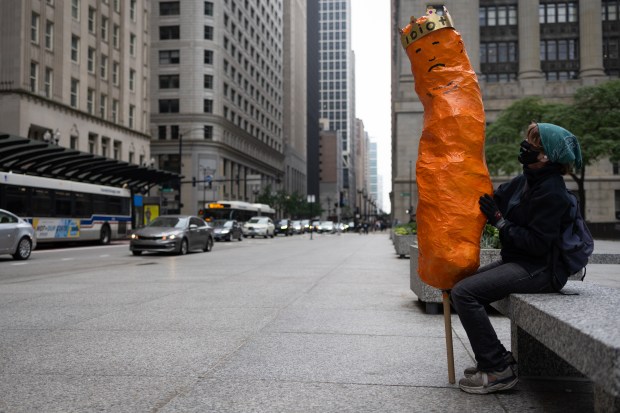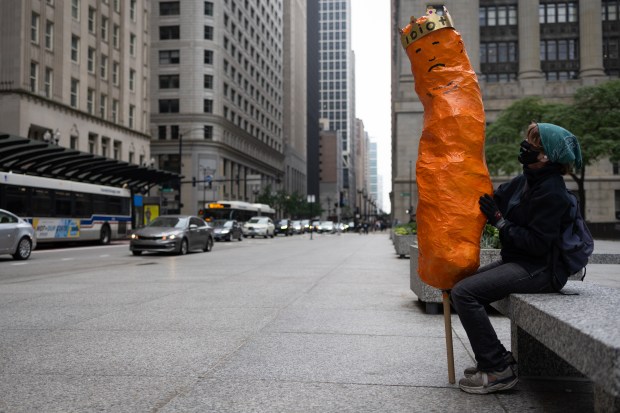“Gruesome and at times shocking” as well as “anything but a pleasant story,” according to the 1927 New York Times critic Mordaunt Hall, “The Unknown” stars Lon Chaney as Alonzo the Armless, a knife-throwing, sharpshooting featured traveling circus performer with a shady past. He’s in love with the owner’s daughter, Nanon (Joan Crawford), the apple of another’s eye: that of the resident strongman.
“All my life, men have tried to put their beastly hands on me,” she confesses to Alonzo backstage, amid the sawdust and manufactured ground fog director Tod Browning and his collaborators plainly adore. (So do I.)
Where “The Unknown” goes from there in its beautifully restored 66 minutes turns a triangular romantic melodrama into its own sinister geometric configuration. Alonzo’s faking his armlessness (only confidant Cojo knows the truth) because he has a rap sheet and a highly incriminating second thumb on one hand. This fugitive from Spanish justice – “The Unknown” takes place in MGM-Hollywood-soundstage-Madrid — apparently has killed before. And in silent superstar Chaney’s sixth of 10 assignments with director Browning, a key figure in cinema horror and nightmarish carnival imagery, Alonzo surely will kill, and maim (himself?) and suffer again. Happy V-Day weekend!
This Sunday only, the nonprofit Chicago Film Society screens a 35mm print of this recent George Eastman Museum restoration. Shortly after its 1927 run until the discovery of a print at the Cinematheque Française in 1968, “The Unknown” was considered all but lost, like the majority of all silent films. But here it is, and the Eastman restoration will be preceded by a newly preserved experimental short film, courtesy of the Chicago Film Society: “Comes to a Point Like an Ice Cream Cone” by Heather McAdams and Chicago musician/songwriter Chris Ligon. An amalgam of carnival, freak-show, and Baraboo, Wisconsin, Circus World archival footage from several different decades, the short is a frenetic whirligig — and the rhythmic opposite of “The Unknown.” It has been shown in different versions in Chicago dating back to the 1980s, though officially completed in 1997.
Hollywood often turned to the rich, colorful, often seedy visual possibilities of circus yarns in the second half of the 1920s, though seldom if ever with the outlandishness and psychosexual tension of “The Unknown.” Manon cannot bear the touch of any man’s hands, and it’s implied that she may be a victim of incest. (Things improve for her once her father has left the scenario, shall we say.) Crawford works some startling wonders in this role, and later credited her career fortunes in part to working with Chaney. His fervent dedication to mastering the physical demands of Alonzo, with some help from a stand-in without arms, Paul Desmuke, left an impression on colleagues as well as audiences.
All the same, “The Unknown” was too much to be a real hit. Today, it’s remarkable for many reasons, chiefly the opportunity to see Chaney’s brilliantly expressive face without terrifying distortions in the name of terror. Is the film’s narrative absurd? Extreme? Feverish? Guilty, guilty, guilty. But this is exceptional pulp, and Chaney and Crawford are startlingly effective. This Sunday’s screening will be accompanied by a live musical score performed by Whine Cave, aka Kent Lambert and Sam Wagster.
“The Unknown” screens 7:15 p.m. Sunday by Chicago Film Society at the Music Box Theatre, 3733 N. Southport Ave.; tickets $9-$12 at musicboxtheatre.com
Michael Phillips is a Tribune critic.




